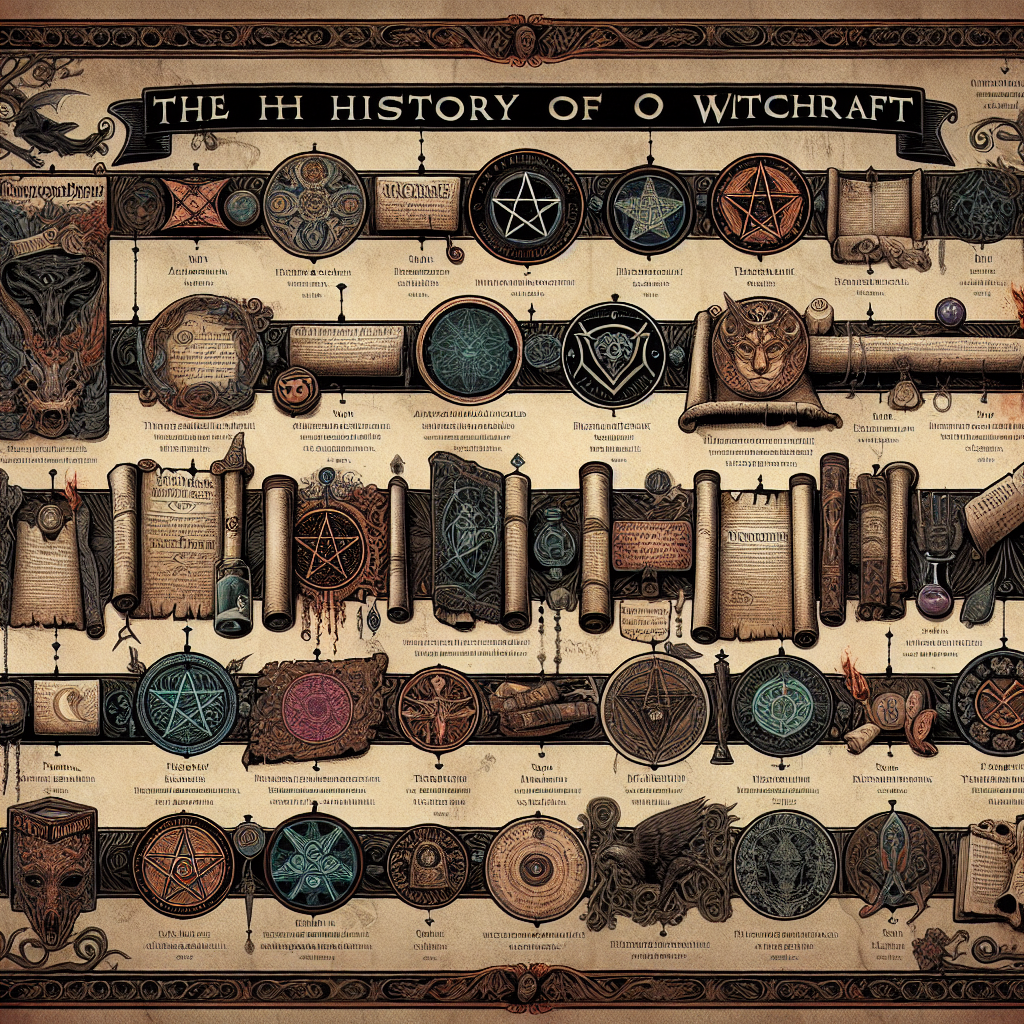Witchcraft Through the Ages: A Historical Timeline of Beliefs and Traditions
introduce
Witchcraft has a long and fascinating history, spanning cultures, time periods and continents. From ancient customs and beliefs to modern interpretations and trends, the study of witchcraft provides a window into human nature, society, and spirituality. This article will explore the historical timeline of witchcraft, focusing on the key beliefs, traditions, and practices that influenced the evolution of this ancient phenomenon.
Antiquity: The Roots of Witchcraft
The origins of witchcraft date back to ancient times, when shamans, healers, and wise women served as spiritual leaders and guides in their communities. In many early societies, these people were revered for their ability to communicate with the unseen world, perform rituals, and provide guidance in health, agriculture, and spiritual matters. The concept of witchcraft as the practice of magic or supernatural abilities can be traced back to these early civilizations, when there was a widespread belief in the powers of the natural world and the spiritual realm.
Europe: Political persecutions in the Middle Ages
One of the most notorious periods in the history of witchcraft was the medieval witch hunts, which occurred primarily in Europe from the 15th to the 18th centuries. During this period, thousands of people, mostly women, were accused of witchcraft, tortured, and executed in the name of ridding society of evil. Superstition, fear, and religious fervor fueled the persecution of witches, as authorities sought to root out those believed to possess supernatural powers or be in league with the devil. The witch hunts left a lasting legacy of fear and suspicion surrounding witchcraft, casting a pall over witchcraft for centuries to come.
Renaissance: The rise of the witch as a symbolic figure
During the 16th and 17th centuries, the concept of witchcraft underwent a transformation as it became intertwined with the political, religious, and social movements of the time. Witches were no longer seen simply as practitioners of magic, but as symbolic figures representing rebellion, heresy and the unknown. During the Renaissance, which saw a resurgence of interest in the occult, alchemy, and mysticism, witches were often depicted as powerful, mysterious, and dangerous figures in art, literature, and folklore. The image of the witch as a symbol of female empowerment, sexuality, and subversion became popular during this era, leading to a reassessment of the role of witches in society.
Modern Witchcraft: Revival and Reinterpretation
In the 20th and 21st centuries, witchcraft has experienced a revival and revival as people seek to reconnect with nature, spirituality, and ancient traditions. Modern Wicca, also known as Wicca or Neo-Paganism, draws from a variety of influences, including Celtic, Norse, Egyptian, and Aboriginal spiritual practices. Witches today may engage in rituals, spells, divination, and other magical practices as a way to tap into their inner strength, connect with the divine, and honor the cycles of nature. The modern Wiccan movement emphasizes self-empowerment, personal growth, and community building, fostering a sense of unity and belonging among Wiccan practitioners around the world.
Frequently Asked Questions
Q: What is the difference between witchcraft and witchcraft?
A: Wicca is a broad term that encompasses a range of magical and spiritual practices, while Wicca specifically refers to a form of modern paganism that combines elements of witchcraft, nature worship, and ancient beliefs. While Wicca is a formal tradition with its own set of rituals, symbols, and practices, Wicca can be more eclectic and personal.
Q: Are all witches female?
Answer: No, witches can be of any gender. While the stereotype of witches as female figures has persisted throughout history, there are also male witches, non-binary witches, and transgender witches. Witchcraft is a diverse and inclusive practice that welcomes individuals from all backgrounds and identities.
Q: Do witches worship the devil?
Answer: No, most witches do not worship the devil. Witchcraft is a nature-based spiritual practice that respects the earth, the elements, and the cycles of life. While some practitioners may use dark or shadow energies in their magic, this does not amount to devil worship.
Q: Can anyone become a witch?
A: Yes, anyone can explore and practice witchcraft, regardless of background, beliefs, or experience. Witchcraft is a personal intuitive practice that can be customized to suit individual interests and needs. Whether you are drawn to the mysteries of the earth, the stars, or the unseen world, there is something for you in the world of witchcraft.
in conclusion
Witchcraft has played a central role in human history, shaping beliefs, traditions and culture for thousands of years. From ancient shamans and healers to modern practitioners of magic, witchcraft continues to inspire and captivate people around the world. By exploring the historical timeline of witchcraft, we can gain insight into the evolution of this occult practice and its lasting legacy in the modern day. Going forward, may we continue to honor the wisdom, power, and mystery of witches in all their forms.
